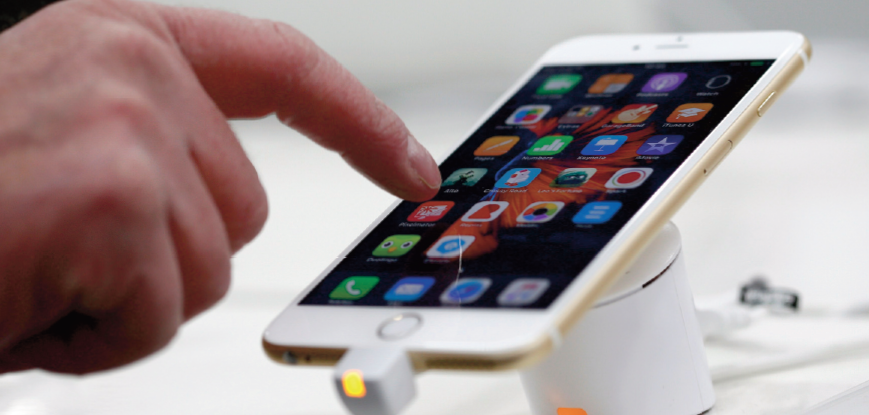WASHINGTON – The county government that owned the iPhone in a high-profile legal battle between Apple Inc. and the Justice Department paid for but never installed a feature that would have allowed the FBI to easily and immediately unlock the phone as part of the terrorism investigation into the shootings that killed 14 people in San Bernardino, California.
If the technology, known as mobile device management, had been installed, San Bernardino officials would have been able to remotely unlock the iPhone for the FBI without the theatrics of a court battle that is now pitting digital privacy rights against national security concerns.
The service costs $4 per month per phone.
Instead, the only person who knew the unlocking passcode for the phone is the dead gunman, Syed Farook, who worked as an inspector in the county’s public health department.
The iPhone assigned to Farook also lacked a Touch ID feature, meaning the FBI cannot use the dead gunman’s thumbprint to unlock it now. The FBI found the phone in a car after the shootings.
A U.S. magistrate last week ordered Apple to provide the FBI with highly specialized software that could be loaded onto the work-issued iPhone 5C used by Farook. He died with his wife in a gun battle with police after killing 14 people in December.
The software would help the FBI hack into the phone by bypassing a security time delay and feature that erases all data after 10 consecutive, unsuccessful attempts to guess the unlocking passcode. This would allow the FBI to use technology to rapidly and repeatedly test numbers in what’s known as a brute force attack.
The FBI said it wants to determine whether Farook had used his phone to communicate with others about the attack.
Apple has said it will protest the ruling and has until Friday to intervene in court.
San Bernardino had an existing contract with a technology provider, MobileIron Inc., but did not install it on any inspectors’ iPhones, county spokesman David Wert said. There is no countywide policy on the matter and departments make their own decisions, he said.
Wert disputed the value of the remote management technology because he said Farook – or any other county employee – could have removed it manually. That would have alerted county technology employees and led them to intervene.
In many offices and classrooms, officially issued smartphones include the installed management software. It can unlock the phone, delete all information in case of loss or theft, track the device’s physical location, determine which apps are installed, check battery life and push software updates.
“This is the business case” for mobile device management, said John Dickson, a principal at Denim Group Ltd., a security consultancy. “The organization simply has no control or influence or anything over the device unless they have some MDM authority. The ability to do remote air updates, the ability to do remote wipe, the ability to control certain settings. Those are the standard kinds of things you do in mobile device management.”












No Comment